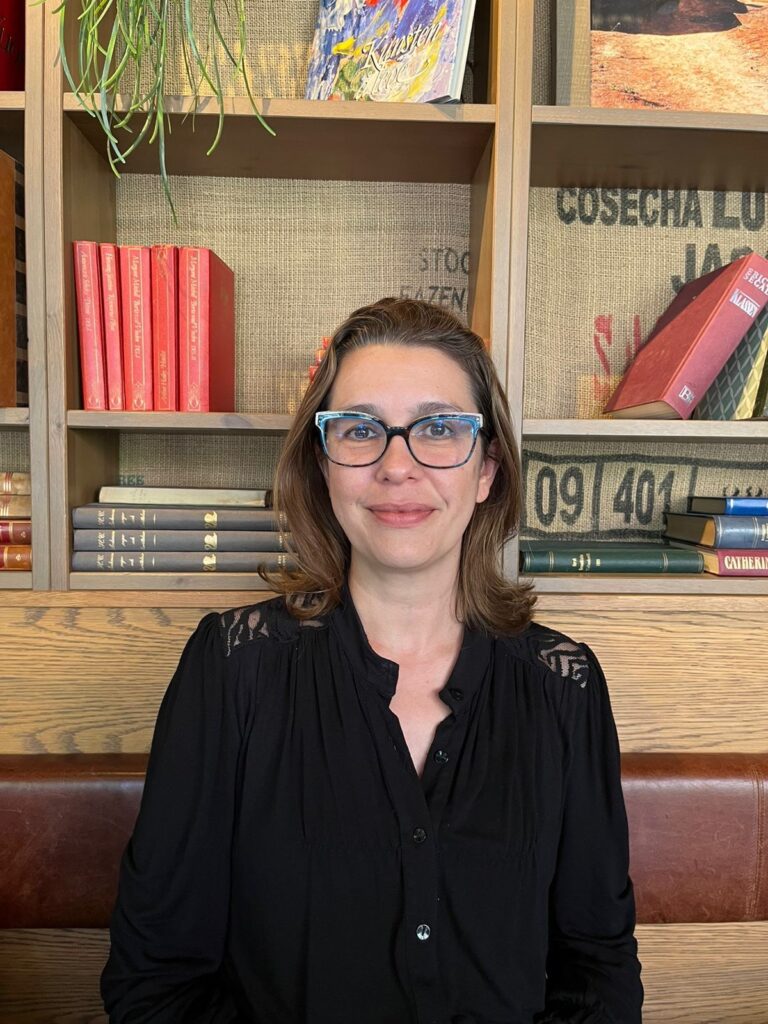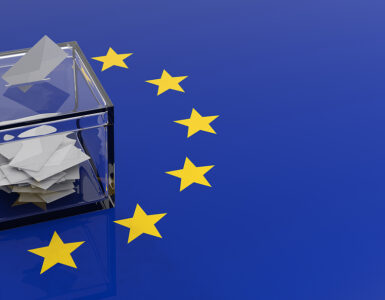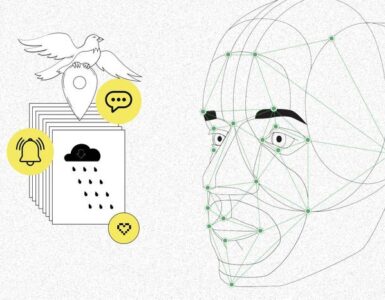by Lina Pranaityte & Jennifer Miller, Heidelberg University, Heidelberg School of Education, Germany and Shane Murphy, Lucia Mesquita & Ricardo Castellini da Silva, Dublin City University Institute of Future Media, Democracy and Society – Fujo, Ireland.
The TeaMLit: Teacher Education in Digital and Media Literacy: Providing Guidance, Resources and Support for Teacher Trainers in Europe project, funded by the European Media and Information Fund (EMIF), has launched its second – in a series of 3 – reports based on the research conducted by several members of the team. This article discusses the report’s main findings, covering 8 regions and countries – France, Poland, Croatia, Bulgaria, Luxembourg, Belgium-Wallonia, Spain, and Catalonia. During the last six months, we collected data and analysed current practices, barriers and opportunities in initial and in-service teacher training and continuing professional development in media and information literacy (MIL).
To compile the report, we primarily employed the MIL framework as conceptualised in the context of the TeaMLit project. Stemming from academic discussions and insights from our partners and specialists, we define MIL as the interlinked competencies and knowledge required to access, find, analyse, evaluate and produce media. MIL education aims to develop peoples’ critical skills for becoming well-informed, empowered, and responsible citizens in democratic, equity- and justice-based societies. The subjects or topics related to MIL might involve but are not limited to critical thinking, dis-/mis-information, (social) media, multimodality, new literacies, online safety, data literacy, conspiracy theories, cyber issues and digital and technology skills.
Incorporating the findings from the first report and building upon them, we have structured the main findings of this second report as follows:
1. The Driving Force: Disinformation and Fake News
One of the most compelling findings of our study is the growing recognition of the importance of MIL education, driven by the rampant spread of disinformation and fake news, which although certainly present beforehand, have been exacerbated in the wake of the Covid-19 pandemic. Across all regions and countries, there is a sense of urgency in addressing these phenomena, underlining the critical role of MIL in today’s society. In Spain, for example, the “Ley General de la Comunicación Audiovisual 2022” (General Law on Audiovisual Communication 2022) aims to enhance media literacy skills in society, with a particular focus on critical thinking, safe media usage, and fake news recognition. Similarly, in December 2023, a number of Poland’s ministries and government bodies signed the Declaration on Media Education, highlighting concerns about harmful content, fake news, and disinformation. The Media Literacy Index ranked Bulgaria as one of the most vulnerable countries to disinformation in the EU, in the wake of which more expectations were put on formal educational sectors as well as on the development of the national strategy on MIL.
2. The Emphasis on Media and Technology
While MIL education is gaining traction, we observed an over-emphasis on using media and technological solutions. This was frequently observed in the training provided to pre-service teachers, with a focus on integrating technology into teaching, virtual learning, and creating and using digital technologies. However, in all our researched regions and countries, we see a shift in focus towards fostering critical thinking skills as an integral part of MIL education, largely driven by NGOs.
3. Diverse Approaches and Translation Disparities
Our study revealed significant variation in the approaches to implementing MIL across different countries and regions. A lack of coherent framework or guidelines meant that what constituted Media Literacy training could vary significantly not only from country to country, but even from university to university, within the same country. Additionally, translation disparities posed challenges in certain areas, hindering the uniformity of educational materials. These aspects of MIL diversity have a positive effect in that they usually tailor MIL educational efforts to local communities and their needs, while at the same time posing some difficulties in (inter-)national assessments, quality assurance and comparisons.
4. The Role of NGOs, Journalists and Fact-Checking Organisations
NGOs have been pivotal in providing MIL education to educators across all contexts. Nevertheless, our research suggests that governments might increasingly rely on these organisations, potentially neglecting the need for more centralised solutions or, as is in the case of Bulgaria, – national strategies on media literacy education. As mentioned above, NGOs appear to play a particularly prominent role in teaching critical media literacy skills to in-service teachers, ensuring they can keep up to date with emerging media trends. Fact-checking organisations have also emerged as key players in MIL education across all of our researched countries. Their importance is even more pronounced in countries such as Poland, where very little evidence of pre-service MIL training could be found. In many countries MIL education relies heavily on the competencies of journalists.
5. Integration into Core Curriculum and Ambiguity
As in our previous report, we found that MIL education is often taught in a cross-subject manner and is rarely embedded in the core curriculum. When it is included, it is dispersed throughout related subjects and across levels. Furthermore, it is frequently defined broadly, needing clear objectives, learning outcomes, or teaching guidelines, leaving it dependent on teachers’ individual expertise, experience, and resources. As the example in France showed, sometimes even the strong institutional structures in MIL education and national policies can result in the heterogeneity of resources and materials, which are difficult to implement in the curriculum.
6. Pre-Service and In-Service Teacher Training
MIL is separate from pre-service teacher training in some countries, leading to disparities between institutions and regions. It is noted throughout the report that much of the pre-service training teachers receive is technology-based, centred around virtual learning, digital resources, and effectively integrating technology into the classroom. In other cases, like Luxembourg, pre-service teacher education might happen in the universities of neighbouring countries, thus adding to the differentiated knowledge of MIL among prospective teachers. For in-service teachers, ongoing professional development in MIL is often more critical but offered on a voluntary basis despite the ever-evolving media landscape.
7. Funding and Resource Challenges
Our research uncovered challenges such as underfunding, resource limitations or the diversity of them, and overworked teachers, all of which hinder the effective integration of MIL education. In all of our researched countries, teachers are already grappling with a myriad of issues. The efficacy of any MIL initiatives will be significantly impeded unless efforts are made to address the systemic issues that have contributed to this, as well as to consider that the heterogeneity of stakeholders in MIL is often overlooked.
Evaluating the efficacy of existing MIL education programs remains complex due to the diverse approaches, financial circumstances, the heterogeneity of stakeholders in MIL and sometimes fast-changing political landscapes. As identified in the first report, sometimes speaking about ‘good practice examples’ is more concrete than comparing the efficacy of national frameworks in MIL education.
9. Citizenship and Education for Democracy
In our researched countries we observed a close link between MIL education, citizenship, and democracy. Both governmental and non-governmental bodies within our researched countries and regions are working towards more empowered and well-informed citizens who are able to navigate the dynamic media landscape with critical competencies and responsibility for equity-based societies.
Beyond mapping the current MIL practices in Europe, the TeaMLit project also aims to establish a sustainable network to provide guidance, resources and support for European teacher educators and trainers in MIL and, in that way, to directly advance students’ abilities to tackle disinformation. To achieve this project goal, it is essential to understand the current state of MIL training in Europe. As a result of the project, a set of online training modules and an online repository of existing materials to support teacher education will be created.
For more information on the project and consortium partners, please visit its webpage: https://media-and-learning.eu/project/teamlit/
To access the full report, please follow the link to D2.2 Report on findings of Initial Investigations

Lucia Mesquita, Postdoctoral Researcher, Dublin City University Institute of Future Media, Democracy and Society – Fujo, Ireland

Dr. Lina Pranaityte, Research Associate, Heidelberg University, Heidelberg School of Education, Germany

Ricardo Castellini da Silva, Media Literacy Educator, Dublin City University Institute of Future Media, Democracy and Society – Fujo, Ireland

Jennifer Miller, Research Associate, Heidelberg University, Heidelberg School of Education, Germany

Shane Murphy, Postdoctoral Researcher, Dublin City University Institute of Future Media, Democracy and Society – Fujo, Ireland














